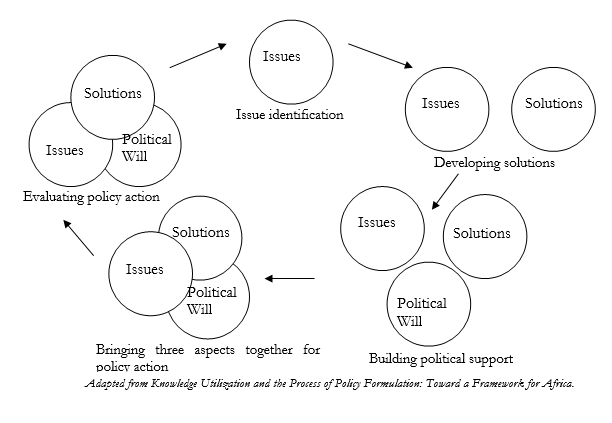
Selecting a Policy Issue
Problem Causes and Impacts
Issue Solutions
Selecting a Policy Issue
There are many ways in which an advocacy issue can be selected reactively, including:
- You keep being faced with a particular animal welfare problem, which the authorities fail to resolve
- You face particular barriers to your animal welfare work which you feel could be overcome through targeted advocacy
- Animal welfare activities that you are involved with may have resulted in successes that could be replicated more widely. Advocacy may help in sharing that experience and ‘scaling up’ the impact of the work
- Institutions and organizations whose policies and practices affect the welfare of animals may announce new proposals or start new activities that need to be responded to – either by resisting or modifying these proposals or activities
- Opportunities for other changes may arise – perhaps because an issue becomes more widely discussed in the media, or because an international conference on that issue is scheduled.
A proactive approach can also be taken to the development of advocacy issues. This will usually be initiated by research and analysis. This could be decided on during strategic planning for your organization, or as part of a review of its existing programs on certain issues. Both of these should include the identification of major development trends, and research and analysis of the policy environment to ascertain whether policies and implementation are successfully meeting animal welfare needs. When an advocacy issue is identified in this way, it can be meaningfully integrated into program work, and strategically used as a tool to achieve program objectives.
The number of advocacy issues it is possible to tackle will depend on your organizational and personal resources. It is generally advisable to focus your work on only as many objectives as you can realistically achieve (which may be just one for smaller organizations). Advocates who attempt to fix everything run the risk of changing nothing in the process.
This means that advocacy issues need to be chosen carefully. However the advocacy issue arises, it is recommended that any decisions on the most appropriate advocacy initiatives are preceded by full research and analysis. Without this overview, it is impossible to determine which advocacy approach is likely to lead to the most effective outcome for the issue (in terms of sustainable change).
|
Advocacy Tool Tool 1. The Issue Choice Matrix |
In making your choice of advocacy issue, do not forget that:
- The issue must be of relevance to your organizations broader strategy.
- The issue should be something you care passionately about and want to advocate on (as this will motivate your work).
- You need to carry out a risk analysis to ensure that your choice of issue will not bring harm to your organization (or that the envisaged benefits far outweigh any risk of harm).
Problem Causes and Impacts
Once you have identified your main issue you need to identify the causes and impacts of the problem.
|
Advocacy Tool Tool 2. Causal Mapping or Problem Tree Analysis |
|
Caution! Whilst the problem tree can be a useful tool it also has negative connotations, because it focuses on problems, rather than looking at solutions. You may wish to also use idea-generating approaches. ‘Appreciative Inquiry’ methods, examine past successes and achievements, with a view to replicating or improving on these. Combine with other tools to generate new and creative ideas. |
Issue Solutions
The process of developing and implementing advocacy solution for your issue can be seen in the following diagram:
In brief, this works as follows:
- Begin by identifying your issue (see above)
- Carry out extensive research and analysis on your issue to develop clear and practical solutions, including problem analysis and stakeholder analysis.
- Work to build political support for your policy change solutions
- Use political support to push through solutions
- Evaluate the policy action taken, and identify new or unresolved issues.
Once you have mapped out the problems, by using the problem tree, you will want to make sure your report ‘comes alive’ for the reader. Your research report should include case studies relevant to your issue and target audience.
|
Advocacy Tool Tool 3. Research Case Studies |



